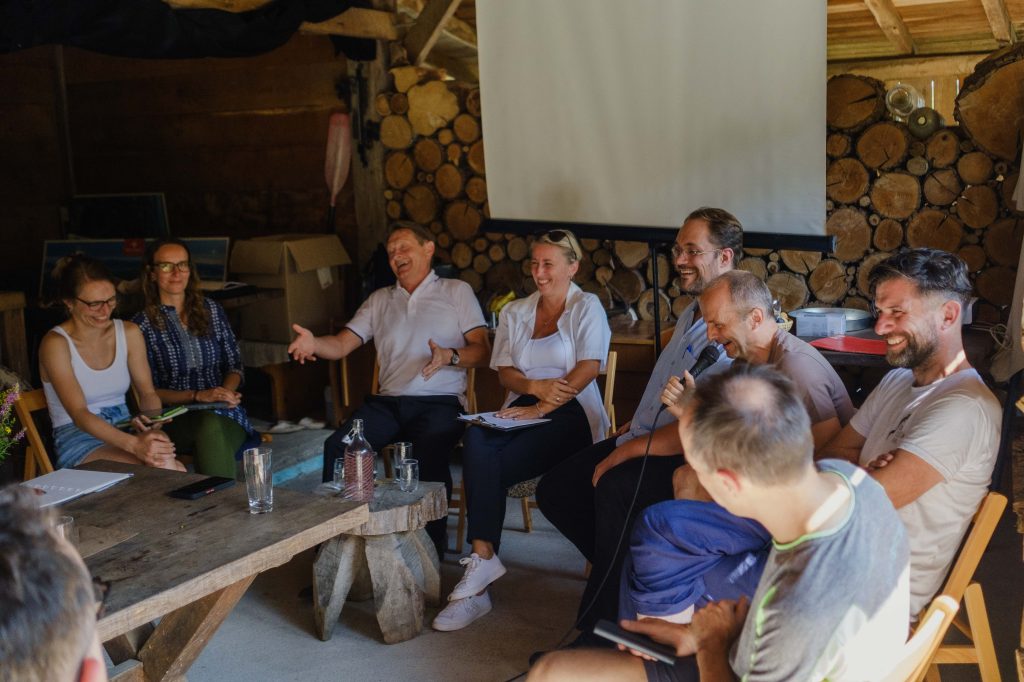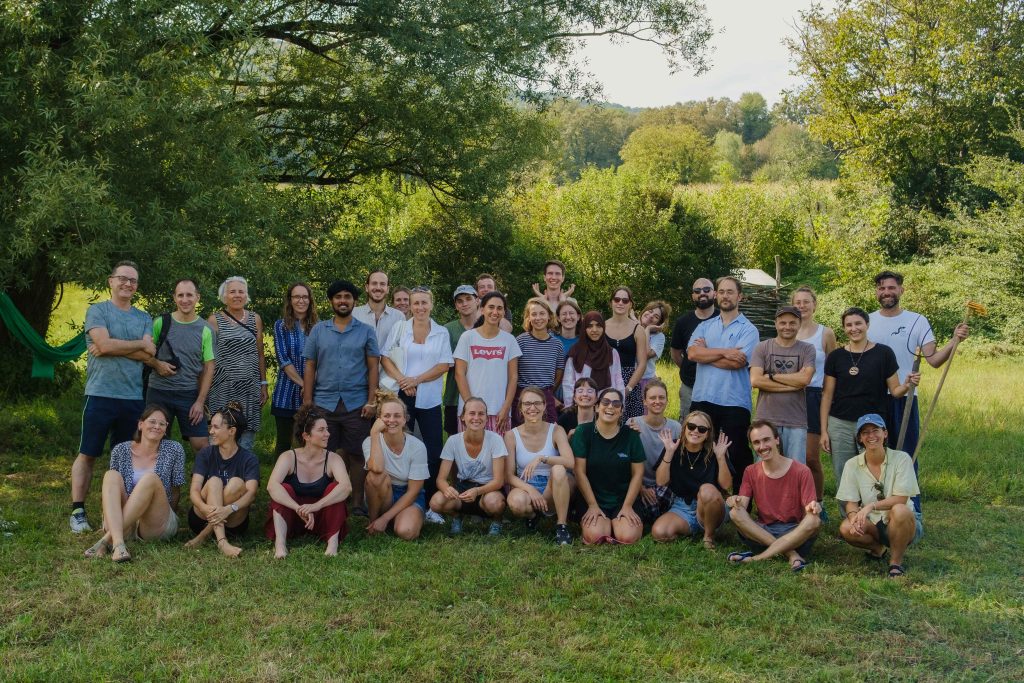How to save one of the world’s most threatened amphibians, and why does it matter?
A post by Verena Simon-Kutscher, Sidra Yousaf, Yanna Raykov and Paul Birkner

The black olm (Proteus anguinus parkelj, Fig. 1) is one of the most endangered amphibians in the world. It is found in an area of less than 10 km2 in Bela Krajina, in the southeast of Slovenia, exclusively in water-filled caves. This amphibian can grow up to 20-28 cm long and feeds on other animals in its aquatic environment. It orients itself in complete darkness with an excellent sense of smell and its ability to detect water disturbances, magnetic fields, and the bioelectrical fields generated by other animals [1]. This black subspecies of the more widespread olm was only discovered in 1986 and much about it is still unknown. But one thing is for sure: the black olm is highly dependent on clean water.
Bela Krajina (Fig. 2) is characterised by ‘karst’: below a thin soil layer, the bedrock consists of fast-weathering limestone, resulting in a network of caves. Rainwater percolates, with minimal filtration, through to these caves at speed. Pollution from agriculture, domestic sewage, and a deposit of foundry sand are therefore significant threats to the olm and other aquatic organisms.
In August 2024, during the Agrobiodiversity Summer School, international students had the opportunity to meet experts and stakeholders who discussed measures and challenges to protect the black olm (Fig. 4). A major pollutant is nitrogen, which is toxic to amphibians and originates from leaching wastewater and fertilisation in agriculture. Although nitrate levels in local springs have already decreased during the past years, they are often still above the tolerable threshold for the olm, reports Mitja Prelovšek, geographer at the Karst Research Institute.

“Farming needs to adapt”, says Blaž Heij, president of the Proteus Association (Društvo Proteus) that formed as a civil initiative in 2010 to campaign for better protection of the black olm. Among other measures, the association demands that “the use of nitrogen fertilisers has to be more strictly regulated in order to prevent overuse”.
Meanwhile, agriculture in Slovenia is in transition, explains Matjaž Glavan, agronomist at the University of Ljubljana: small farms are closing down, which means that remaining farms are expanding, but also that farmland is being abandoned. “People are leaving Bela Krajina”, says Andrej Kavšek, mayor of Črnomelj, the municipality in which the black olm’s habitat lies, and “forest is progressing”. If both the black olm and the cultural ecosystem are to thrive, the local population needs to be involved and supported to take the necessary measures.
Much work has already been done to inform the public about the significance and vulnerability of the black olm, and not only by the Proteus Association. In a project organised by local teacher Vesna Fabjan, pupils dedicated their free time to researching the black olm and even created an illustrated children’s book about it. On the Zupančič family farm, who hosted the Agrobiodiversity Summer School participants for a day, there is also a permanent exhibition on this rare animal (Fig. 3).


All stakeholders agree that public awareness for the black olm is no longer the problem. Nor is scientific evidence: extensive environmental monitoring of springs in the area conducted by Mitja Prelovšek and his team as well as modelling of different land use and management scenarios presented by Matjaž Glavan provide a solid base for policy-making. But the corresponding measures, like installing a piped wastewater system, supporting local households to improve domestic sewage, or giving incentives and compensation to farmers implementing a wide crop rotation and growing crops that require lower nitrogen inputs, are all expensive.
“The main problem is money”, says the mayor Andrej Kavšek, describing his struggle to achieve funding from the government of Slovenia and the European Union. Researchers from the University of Ljubljana suggest to place the area under the stronger protection of a landscape park, which would mean that an interdisciplinary team could help implement protective measures and support farmers and other residents.
Overall, it seems that all stakeholders, despite their different roles and perspectives, are united in their aim to better protect the black olm but have reached the limit of what they can do without major external investments. This could be problematic if the protection of the highly vulnerable black olm and the diverse cultural landscape under which it lives is financed with money generated by environmental degradation elsewhere.
Thus, the issue of the black olm raises questions which reach far beyond the 10 km2 in Slovenia. For Jernej Kavšek, responsible for analytics at the Slovenian Ministry of Agriculture, character species like the black olm are just “lighting points”:
“We have to ask ourselves: in what [kind of] environment do we want to live? And these lighting points can guide us there. If we help the olm to live better, then we help ourselves to live in a better environment.”

This blog post was written as part of the “Agrobiodiversity Summer School” in Slovenia in August 2024 (Fig. 5), as a cooperation project between the ZHAW Institute of Natural Resource Sciences, the Research Institute of Organic Agriculture in Switzerland (FiBL) and the Biotechnical Faculty of University of Ljubljana nd is supported by the Mercator Foundation Switzerland.
More information on the black olm: https://www.crni-moceril.si/en
References
- Bizjak Mali, L., & Sket, B. (2019). History and biology of the «black proteus« (Proteus anguinus parkelj Sket & Arntzen 1994; Amphibia: Proteidae): a review. Folia biologica et geologica 60(1), 5-37. doi: 10.3986/fbg0049 ↩︎